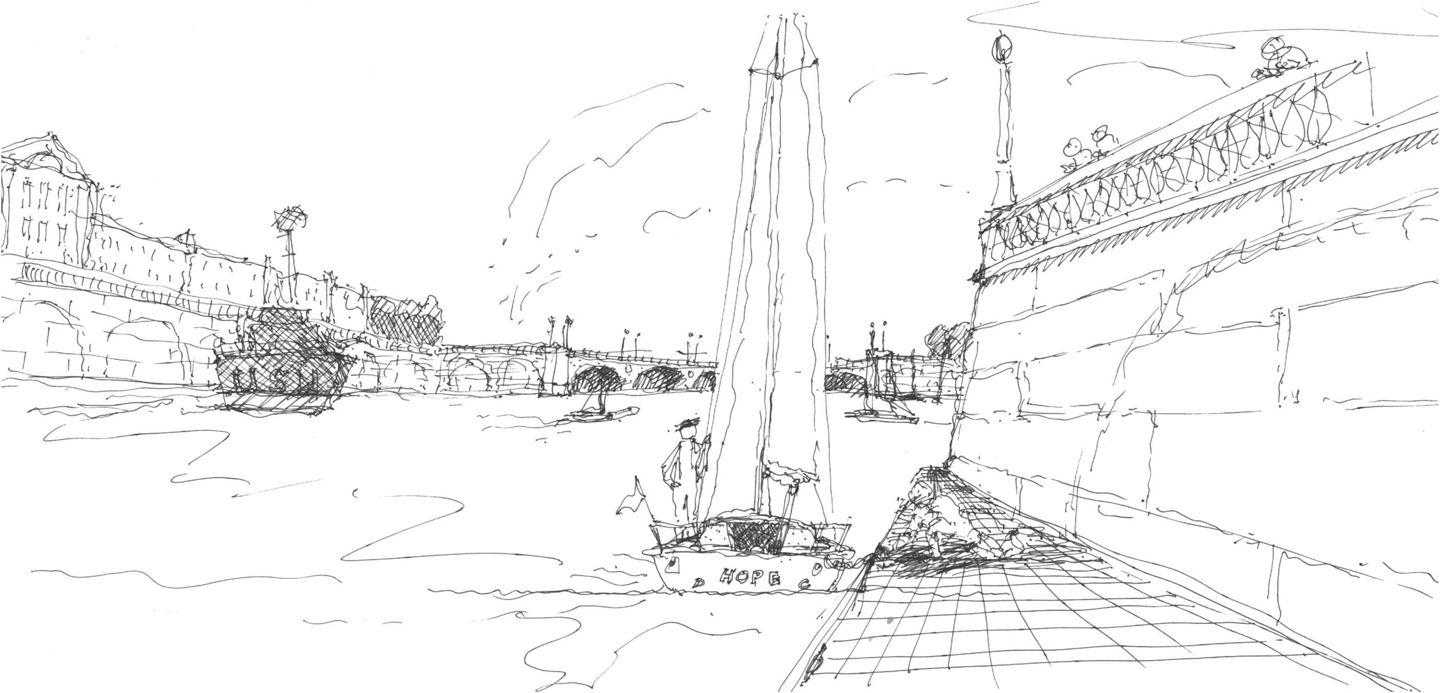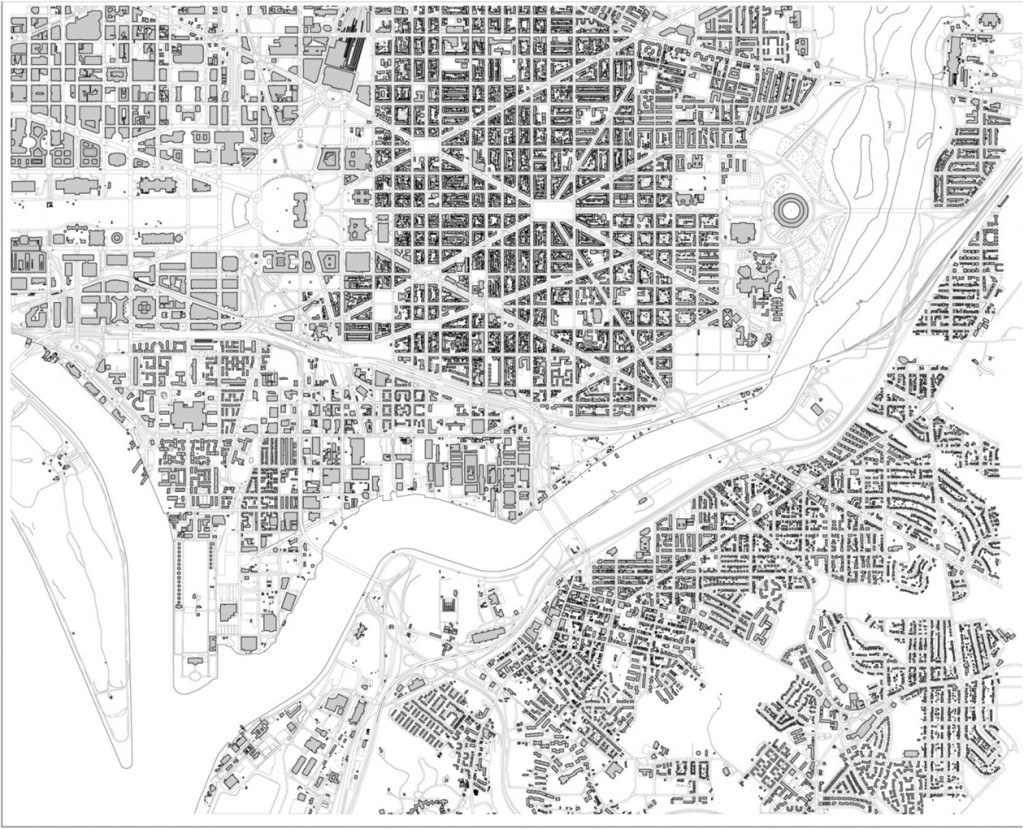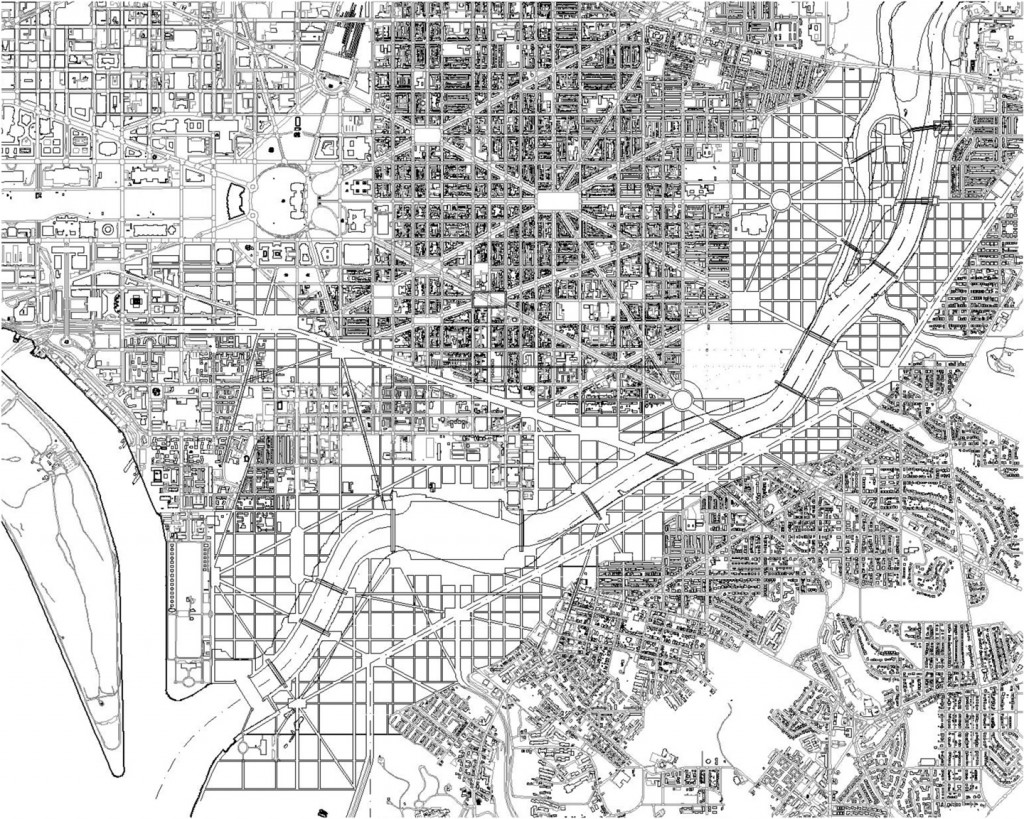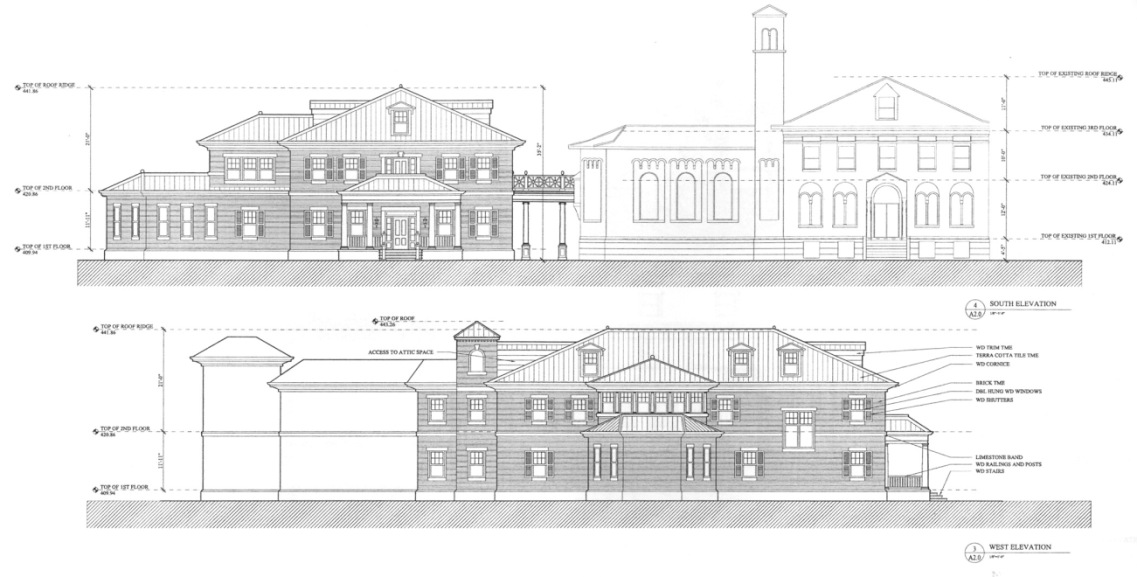Recent construction in DC dilutes the character of the City’s built environment and it is on the verge of loosing its identity. Obviously the City and its citizens deserve better. The order and principles of the L’enfant Plan provided the “DNA” of the City. The McMillan Commission (1902) invented the National Mall and created many if not most of the beautiful buildings and landscapes of DC including the Lincoln Memorial, Federal Triangle, Rock Creek Park, the GW Parkway and more. The McMillan II Initiative proposes architecture and City Building principles commensurate with DC’s legacy and its world role. It will enable healthy “green” growth for DC, provide longevity and promote timeless beauty into the 22nd Century and make DC a WorldClass City.
The first round of McMillan II recognized the mile-wide no-man’s land of freeways and underused parks existing along the Anacostia River, much of it on Federal land. This disconnection is the City’s urban, social and political nightmare. DC needs a healing act, both literally and figuratively, stitching together this urban gash for the social, economic and civic benefit of all. The first round of McMillan II was recently made public on the Kojo Nnamdi show and numerous blogs. In the second round we seek participants to assist in further detailing the plan and ground it in the best sustainable, economic, hydrological, financial, urban planning and design practices. Skills sought include collegiality, reading, writing, drafting and computer graphics, modeling and animation, video, sketching and water coloring to further develop and repackage the project.
For participation, please contact Dr. Nir Buras at info@buras-classical.com and state your relevant interests, skills and experience.
Additionally, he and I are intending to hold a salon to discuss the plan, its underpinnings, and its consequences at some point in the future. If you’re not interested in working on the project, or if you’re like me and enjoy a good debate about architecture, that might be more your thing. Stay posted.



